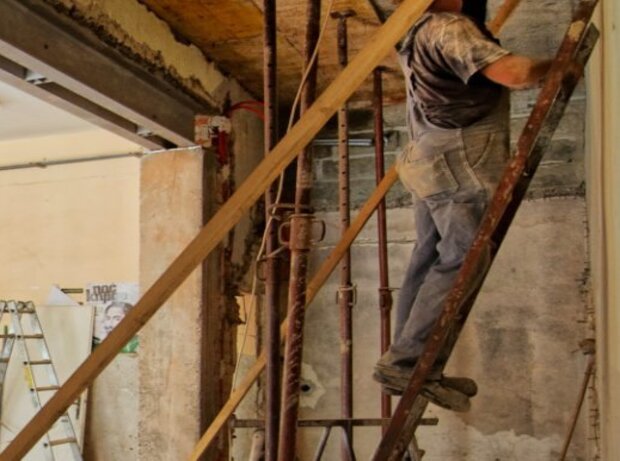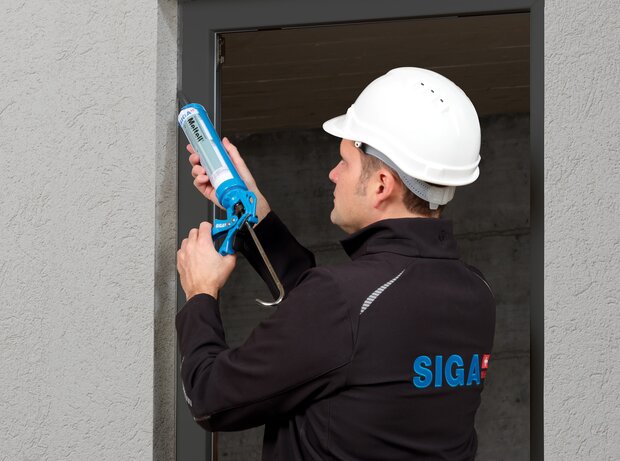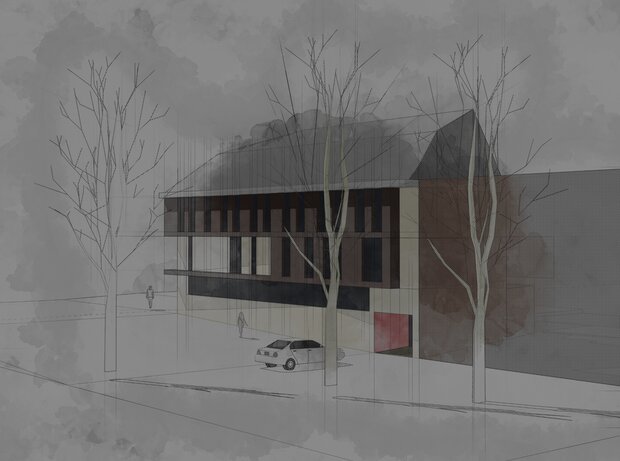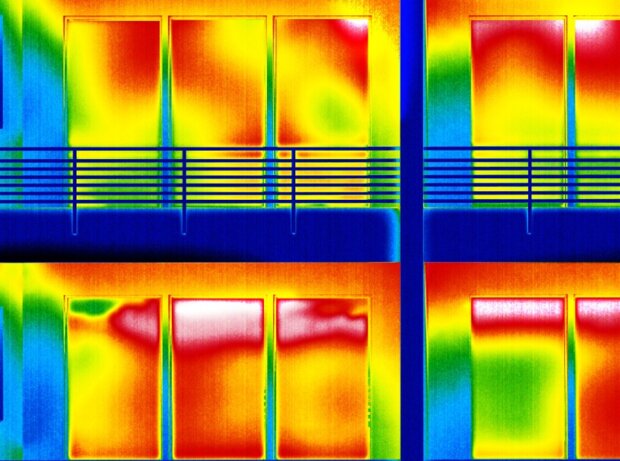
Airtightness in PAS 2035 Standard for Domestic Retrofit
The PAS 2035 standard introduces a risk-based approach for low-energy domestic retrofits. This guide examines its impact on airtightness, ventilation, energy efficiency, and moisture safety.
The elephant in the room
2050 is closer than 1991.
As the banquet of abundantly cheap fossil fuels comes to an end. As we start to move onto the lean diet of zero carbon, there is an inconvenient obstacle that we must face.
We are targeting zero carbon by 2050. 80% of the buildings that already exist today will still be in use in 2050. To have any hope of achieving zero carbon, we must find a way to decarbonise existing buildings at scale. We need to do it in a safe, affordable and dignified way.
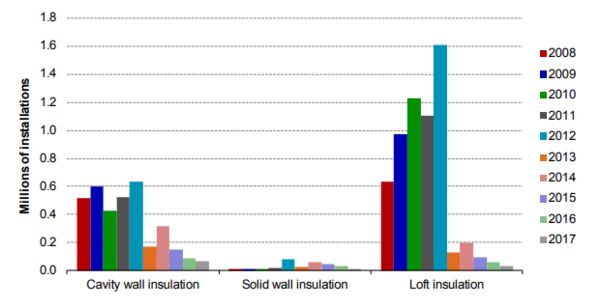
Annual installation rates of retrofit insulation have slowed down rather than taken off. CCC report UK housing: Fit for the future (https://www.theccc.org.uk/publication/uk-housing-fit-for-the-future/)
Until now, the most progressive policies focus on new construction. For example, builders of new homes must achieve zero carbon by 2025. We have learnt valuable lessons about what works, and what doesn’t work. But, building a zero-carbon new home is easy.
Building a zero-carbon new home is easy!
At least it is easy if you compare it to decarbonising an existing home. Make the home historic, occupied, and space constrained and you have a very challenging prospect. But we do need to do this and at a terrifying rate.
We need to renovate 100 homes an hour between now and 2050
We’ve only got one shot at achieving Zero Carbon by 2050
We only have one shot at this, given the time frame. There have been numerous failures of retrofit in the past. When big schemes go wrong you may hear about it in the press. But poorly considered retrofit causes misery at any scale.
So, we have a lot of difficult work to do in a very short time. And yet until recently there has been surprisingly little focus and guidance on this task.
Energiesprong is a fine initiative for renovating multi-home buildings, although it has not yet taken off. There are notable training courses, such as AECB Retrofit Coordinator Course, and tools available, such as Carbon Co-Op’s Home Retrofit Planner or Build Test Solutions Smart HTC. Retrofit works is a scheme to link customers to retrofit coordinators and contractors. Each of these initiatives will play a role and will be complementary to PAS 2035.
What is PAS 2035?
Dr Peter Rickaby has led a BSI team to develop the PAS 2035 standard for Retrofitting dwellings for improved energy efficiency. The standard is a concise and practical method for assessing the risks in a project and delivering it in a controlled manner.
‘PAS’ stands for Publicly Accessible Specification, it is a type of pre-ISO or BS standard which is used in establishing a methodology more generally before later being developed into a full standard.
It is intended to radically overhaul how homes are renovated in the UK. The PAS standard will become a requirement for publicly funded schemes. It is already a requirement for work funded via ECO, GHG vouchers, LADS2 or the SHDDF. PAS 2035 has also been adopted by the Scottish Government.
“PAS 2035 Retrofitting dwellings for improved energy efficiency” is a framework to achieve high quality renovation of existing buildings. The first step is to assess the risk profile of a project.
Then, options for improvement are evaluated; to determine the best package of improvements for a dwelling, and the development of a medium-term improvement plan, so that retrofit work can be carried out in affordable stages.
The process guides you through the assessment, design and installation stages and makes recommendations for ongoing monitoring.
In short, it’s a guide to avoiding many of the pitfalls of domestic deep renovation (whereas PAS 2030 is a certification of competence for domestic retrofit installers.)
Who is PAS 2035 for?
PAS 2035 is applicable to any scale of project from a single home to a large estate; to heritage buildings or modern. It will be highly beneficial to clients procuring renovation at housing associations, councils, RSLs, who can use the standard to control quality on their schemes. The standard will be highly beneficial to clients procuring renovation at housing associations, councils or RSLs, who can use the standard to control quality on their schemes.
It is informative to the designers, consultants, contractors who will be designing and installing. But as a quality control process, it is of most importance for the client or customer. Clients of all scales may use the Trust Mark scheme for sourcing reputable contractors. Trust Mark requires adoption of PAS 2035.
The standard does not attempt to be a ‘how to manual’, so it doesn’t contain instructions or case studies. It requires suitably qualified people for each role. Those people will bring their competence to the task. It does however refer to certain key standards and guides for this purpose.
Risk assessment of the renovation project
At the core of the standard is a ‘triage’ process to assess if the project is low, medium, or high risk. This then sets the route for the project through the process, which starts at conception, runs right through design, installation, handover, monitoring and feedback.
The risk assessment is mercifully short – it is less than 2 pages long. As stated, it is a simple to use, easy to grasp document.
Who is required to do the project?
The roles required to deliver the project must demonstrate suitable experience or qualification:
- Retrofit advisors
- Retrofit assessors
- Retrofit coordinators
- Retrofit designers
- Retrofit evaluators
An individual may fulfil two or more of these roles. The qualifications required for each are dependent on the risk profile of the project.
Here is a map of who does what and when.
Interaction matrix
‘Focus on the interfaces’ is a mantra for managing complexity. Experienced builders and designers understand or can quickly determine what combinations of components will work well, and which are problematic. The standards include a useful interaction matrix that codifies a lot of this knowledge.
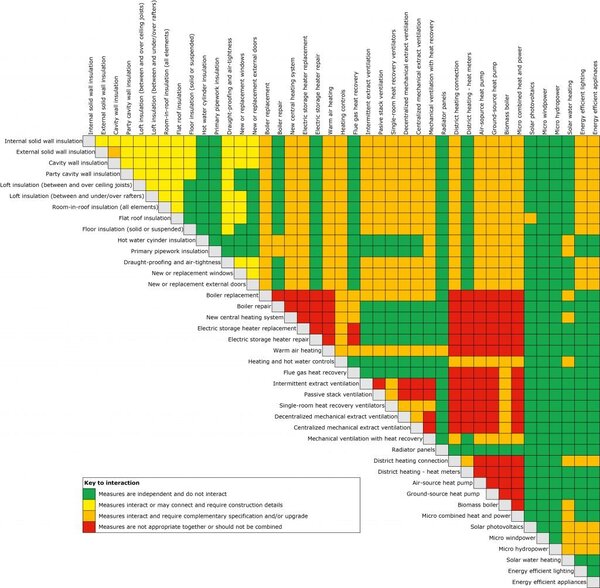
Retrofit measures interaction matrix from PAS 2035 CREDIT: Permission to reproduce extracts from British Standards is granted by BSI Standards Limited (BSI). No other use of this material is permitted.
Ventilation and airtightness in PAS 2035
These are co-dependent! PAS doesn’t recommend to make a building airtight without adequate ventilation. Neither is it worth investing in expensive ventilation systems such as MVHR if the building fabric resembles a swiss cheese.
PAS 2035 recognises this co-dependency;
- If the post-retrofit Q50 is better than 5 m3/hr/m2 then continuous running ventilation (such as MVHR or MEV) is recommended.
- If post-retrofit Q50 is worse (i.e. leakier) than 5 m3/hr/m2, trickle vents with intermittent or passive ventilation are permitted.
Draughtproofing in PAS 2035
Airtightness measures are defined as an intervention to the fabric. It is compatible with any other intervention to the fabric or services. The standard defines the vocational competence expected for the airtightness designers, installers, and inspectors.
In addition, it defines certain checks the designer should make and what to look for in the building pre-installation.
If new insulation or airtightness layers trap moisture unintentionally, it can lead to premature failure. This is a classic failure of renovation and one of the primary risks which you want to avoid. The risk is compounded when the existing build up is unknown. Moisture variable membranes can be highly valuable in this situation as they will dynamically respond to varying conditions, thus giving the designer or builder more confidence in the robustness of the works.
Conclusion
PAS 2035 is a welcome and timely tool kit for setting clear and robust specifications for deep energy retrofit, which is one of the biggest infrastructure and social issues the UK is facing in the next 30 years. Anyone procuring, designing, and managing complex domestic retrofit projects should use this standard.
In lieu of meaningful improvements to the retrofit building regulations in the Future Homes standard, or ambition in government strategy perhaps PAS2035 could be required for all publicly funded projects?
Further resources on PAS2035
• PAS 2035 Overview
• PAS 2035 Standard
• The scale of the challenge, from the CCC, & from Westminster
• Energiesprong
• AECB Retrofit Coordinator Course
• Carbon Co-Op’s Home Retrofit Planner
• Retrofit works linking customers to retrofit coordinators and contractors
• Build Test Solutions Smart HTC.
• Dr Sarah Price’s own channel on home retrofit
• SIGA blog post on the EnerPhit Standard for renovation

Bertie Dixon
Bertie has practised building services engineering and sustainability consulting in the UK for 15 years. He is a certified PassivHaus planner. He is on a mission to help you deliver a high-quality building, one that does what it says on the tin.


